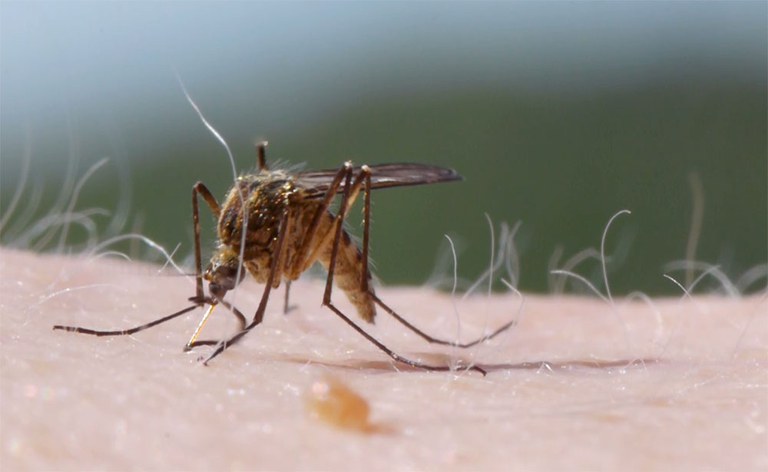Posted: June 28, 2018
This is the 7th of eleven short news articles written by students, during the professional development class. This year we had the students interview their advisor(s), in an effort to help them better understand the larger context of their projects.
Swatting Away Disease: One Mosquito At a Time
By Fhallon Ware-Gilmore
We all know them, those pesky flying bloodsuckers that raid upon us in search of a tantalizing meal. Best case scenario, you're left with nothing but a telltale sign of a departure- an itchy, red and pulsating bite. Worst case scenario, you are now left with an unexpected "visitor", such as a parasite or pathogen, traveling through your body.
An important component in a mosquito's chance of transmitting a parasite or pathogen is the overall length of its EIP (Extrinsic incubation period), a system two Penn State researchers have joined forces to explore.
"EIP is a neglected parameter, that has been overlooked since the 1930's" explains Penn State professors and Huck Scholars of Entomology, Matt Thomas and Beth McGraw. The EIP is a temperature-dependent model that describes the amount of time it takes for the parasite or pathogen to infect the vector (in this case, a mosquito), go through development, and travel back to the salivary glands where it can now be transmit by the vector to another human through an infectious bite. The faster the parasite can migrate through the body, the increased opportunities it has to infect humans in future bites. Previous research on EIP is extremely limited in its scope. "The first study was conducted with one parasite and one mosquito species. Currently, there is not a characteristic EIP curve for any of primary malaria vectors in Africa, and we wish to change that" explains the researchers.
The Thomas lab works in understanding the dynamics and distribution of transmission while exploring novel tools and optimizing strategies that already exist. "The balance of fundamental and applied research makes our work unique" Thomas explains. "We challenge the dogma and conduct research that adds ecological complexity, giving real-world realism to our work." The McGraw lab is broadly interested in the relationship between vectors and their pathogens. "Specifically, we study the genetics of their interactions- and how those interactions might evolve over time," she explains.
Thomas's role in their current project is to investigate if EIP is variable between different African mosquito species. He and his lab also aim to create EIP prediction curves for those species. The information collected from these curves will allow scientists to understand the necessary key players in infection like parasite development rate, mosquito condition and life history, and the influence of environmental and climatic conditions.
McGraw is focused on understanding the genetics side of EIP within a framework of related mosquitoes. "Studying EIP in mosquito families, adds a second component to our work. By doing this we can understand if genetic variation in EIP exists, if it is heritable in families, and if so, is it possible to determine which mosquito genes influence EIP." This work may help understand how EIP changes over geographic landscapes and identify possible ways to target mosquitoes for genetic modification.
Research and collaboration are becoming an integral part in the arms race against vector-borne disease. The work McGraw and Thomas are conducting will influence policy and management practices around the world. Mosquitoes are one of the deadliest organisms on this planet, and outbreaks of infectious disease such as Malaria, Dengue, Zika, and Yellow Fever occur worldwide. Control efforts are important now, more than ever, and with the help of these two Penn State scientists, we might just be on the way for an "uninfected" mosquito-free day.


